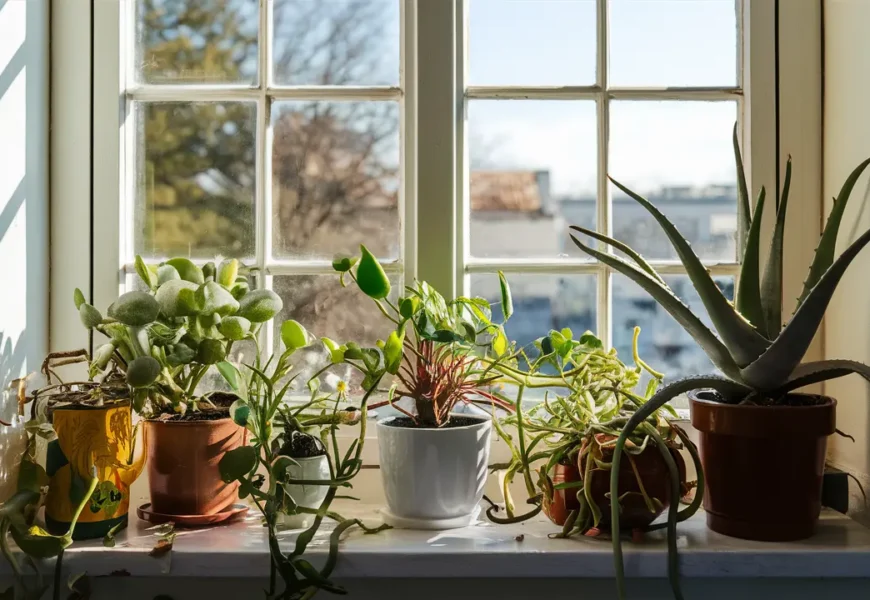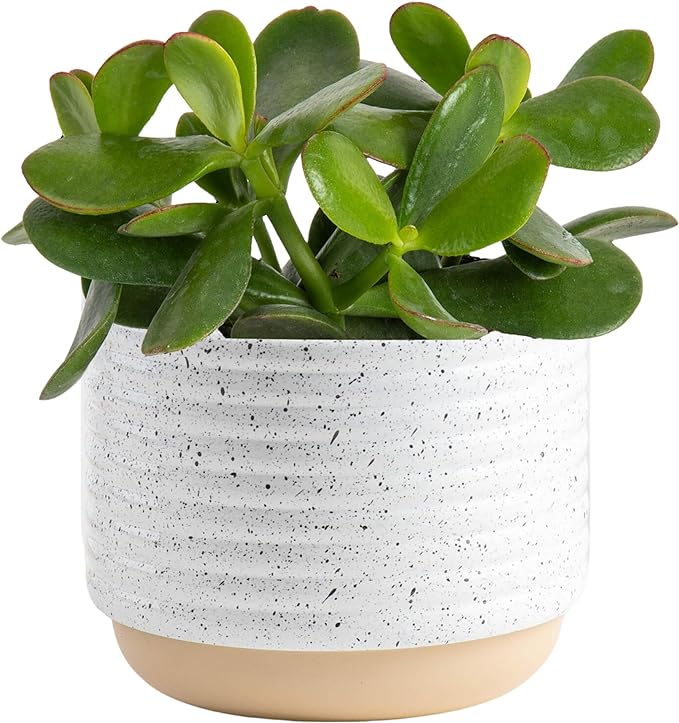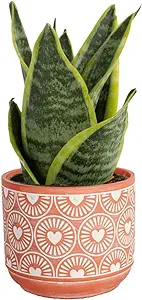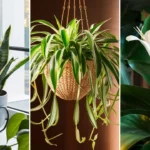Direct sunlight can be a boon for houseplants, infusing them with the energy they need to thrive and flourish. However, not all plants can withstand the intensity of direct sunlight. In this comprehensive guide, we unveil the best houseplants for direct sunlight, offering a diverse selection to suit every taste and space.
Table of Content
Introduction
Choosing the right houseplants for such environments is crucial for maintaining a vibrant indoor garden.
When it comes to selecting houseplants that thrive in direct sunlight, the options are abundant. From succulents to flowering beauties, there’s a plant for every sunny spot in your home.
Best Houseplants for Direct Sunlight
Let’s explore a diverse range of sun-loving houseplants that will not only survive but also thrive under the warmth of direct sunlight.
1. Aloe Vera: A Sun-Loving Succulent
Aloe vera, often hailed as the “plant of immortality,” is not only revered for its medicinal properties but also for its ability to thrive in bright, direct sunlight.
Originating from the Arabian Peninsula, this succulent features thick, fleshy leaves that store water, making it incredibly resilient to drought conditions.
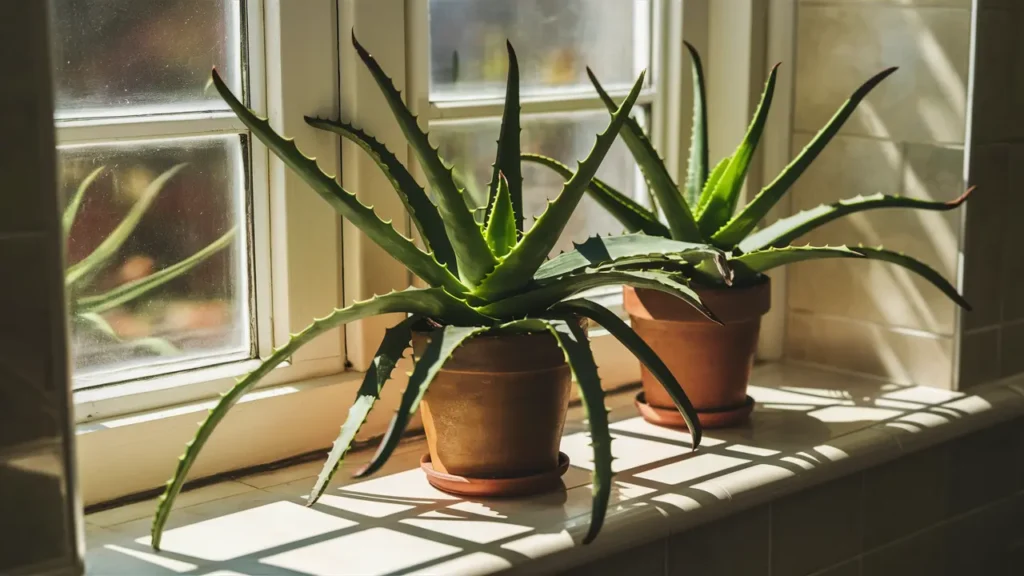
- Care Tips
To ensure your aloe vera plant thrives, place it near a sunny window where it can receive ample sunlight. A south or west-facing window is ideal for providing the intense light that aloe vera craves.
Ensure the soil is well-draining to prevent waterlogging, as excess moisture can lead to root rot. Water your aloe vera sparingly, allowing the soil to dry out completely between waterings.
- Benefits
Apart from its ornamental value, aloe vera offers a plethora of medicinal benefits.
The gel-like sap found in its leaves is renowned for its soothing properties and is often used to treat sunburns, minor cuts, and skin irritations.
2. Jade Plant: Resilient and Radiant
With its vibrant green foliage and healing properties, aloe vera is a must-have addition to any sunlit space.
The jade plant, also known as Crassula ovata, is a striking succulent native to South Africa. Characterized by its thick, glossy leaves and sturdy stems, the jade plant is a symbol of prosperity and good fortune in many cultures.
It thrives in bright, indirect sunlight but can also adapt well to direct sunlight with proper care.
Jade Plant brings a touch of sophistication to any space with:
- Stylish Design
- Effortless Care
- Clean Air Benefits
- Thoughtful Gift Idea
Liven up your space and breathe easy with the Jade Plant!
- Care Tips
Position your jade plant near a sunny window where it can receive several hours of direct sunlight each day. A south-facing window is ideal for providing the intense light that jade plants prefer.
Allow the soil to dry out between waterings, as jade plants are susceptible to root rot if overwatered. With proper care, your jade plant will reward you with lush green foliage and perhaps even a few delicate pink or white flowers.
- Benefits
In addition to its aesthetic appeal, the jade plant is believed to attract positive energy and prosperity according to Feng Shui principles.
Placing a jade plant in your home or office is thought to bring good luck and financial success, making it a popular choice for those seeking harmony and abundance.
3. Snake Plant: Striking and Sturdy
Liven up your home with the nearly indestructible Snake Plant!
This beauty is easy to care for, purifies your air, and comes in a decorative pot. Perfect for busy lives or anyone who struggles with plants!
The snake plant, also known as Sansevieria trifasciata, is a hardy and versatile houseplant native to West Africa. With its upright leaves and striking variegated patterns, the snake plant adds a touch of elegance to any space.
It thrives in a variety of light conditions, making it an excellent choice for both beginners and experienced plant enthusiasts.
- Care Tips
While snake plants can tolerate low light conditions, they also thrive in bright, indirect sunlight. However, they can withstand direct sunlight if acclimated gradually.
Place your snake plant near a sunny window where it can receive several hours of sunlight each day.
Water your snake plant sparingly, allowing the soil to dry out completely between waterings to prevent root rot.
- Benefits
In addition to its decorative appeal, the snake plant is known for its air-purifying properties.
It effectively removes toxins such as formaldehyde, benzene, and trichloroethylene from the air, making it an excellent choice for improving indoor air quality.
With its low maintenance requirements and health benefits, the snake plant is a welcome addition to any sunlit space.
4. Ponytail Palm: Quirky and Resilient
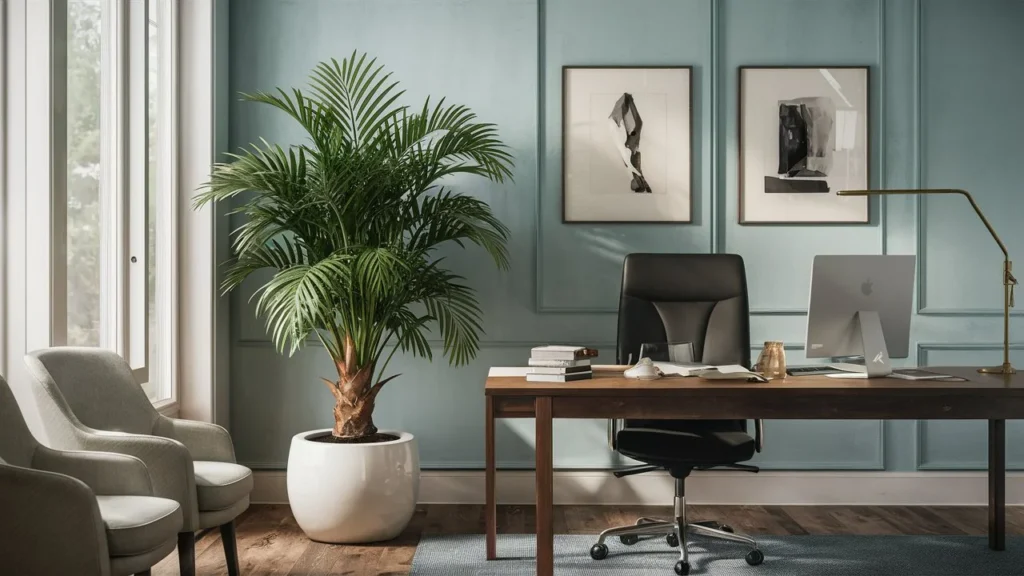
The ponytail palm, also known as Beaucarnea recurvata, is a unique and quirky houseplant native to Mexico. Despite its name, the ponytail palm is not a true palm but rather a member of the Agave family.
With its long, slender leaves cascading from a central bulbous trunk, the ponytail palm adds a touch of whimsy to any room.
- Care Tips
Ponytail palms thrive in bright, indirect sunlight but can also tolerate direct sunlight with proper acclimation.
Place your ponytail palm near a sunny window where it can receive several hours of sunlight each day.
Water your ponytail palm sparingly, allowing the soil to dry out between waterings. With its drought-tolerant nature and low maintenance requirements, the ponytail palm is an excellent choice for busy plant parents.
- Benefits
In addition to its decorative appeal, the ponytail palm is incredibly resilient and can withstand neglect and adverse growing conditions.
It stores water in its bulbous trunk, allowing it to survive extended periods of drought. With its unique appearance and easy-care nature, the ponytail palm is a charming addition to any sunlit space.
5. ZZ Plant: Stylish and Low-Maintenance
The ZZ plant, also known as Zamioculcas zamiifolia, is a stylish and low-maintenance houseplant native to Eastern Africa. With its glossy, dark green foliage and upright growth habit, the ZZ plant adds a touch of modern elegance to any interior space.
It thrives in a variety of light conditions, making it an excellent choice for beginners and experienced plant enthusiasts alike.
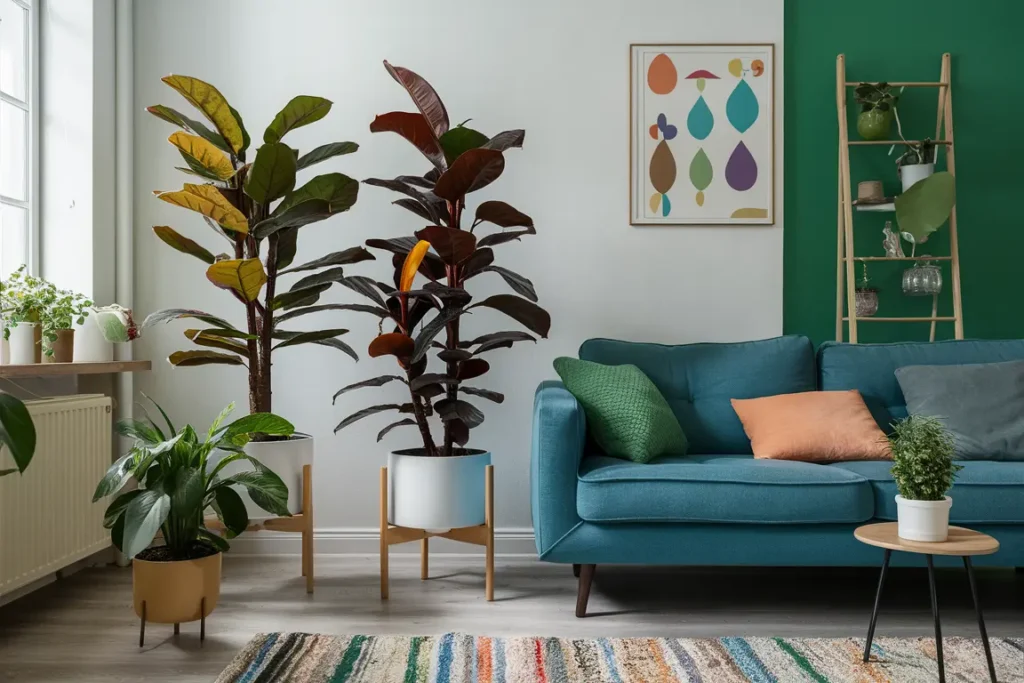
- Care Tips
ZZ plants prefer bright, indirect sunlight but can also tolerate low light conditions. However, they may lose their vibrant green color and become leggy in low light.
Place your ZZ plant near a sunny window where it can receive filtered sunlight throughout the day.
Water your ZZ plant sparingly, allowing the soil to dry out completely between waterings to prevent root rot.
- Benefits
In addition to its decorative appeal, the ZZ plant is incredibly low-maintenance and can withstand neglect and adverse growing conditions. It stores water in its rhizomes, allowing it to survive extended periods of drought.
With its air-purifying properties and easy-care nature, the ZZ plant is a versatile addition to any sunlit space.
Conclusion
In conclusion, selecting the best houseplants for direct sunlight allows you to create a vibrant and thriving indoor garden that brightens up your living space.
Whether you prefer succulents like Aloe Vera and jade, or quirky specimens like the ponytail palm and ZZ plant, there’s a sun-loving houseplant for every taste and style.
By providing proper care and attention, you can enjoy lush greenery and natural beauty in even the sunniest corners of your home.
So, embrace the sunshine and let your indoor garden flourish with the best houseplants for direct sunlight.
FAQs
Q: Can I place any houseplant in direct sunlight?
- A: While many houseplants thrive in bright, sunny conditions, not all are suited for direct sunlight. Some plants may suffer from sunburn or heat stress if exposed to intense sunlight for prolonged periods. It’s essential to research the specific sunlight requirements of each plant before placing them in direct sunlight.
Q: How can I tell if my houseplant is getting too much sunlight?
- A: Signs of overexposure to sunlight include leaf scorching, wilting, or yellowing. If you notice these symptoms, consider moving your plant to a location with filtered or indirect sunlight to prevent damage.

